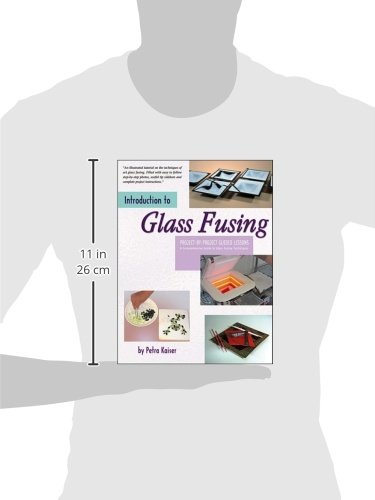Customer Services
Copyright © 2025 Desertcart Holdings Limited
Desert Online General Trading LLC
Dubai, United Arab Emirates



Introduction to Glass Fusing: Project-By-Project Guided Lessons
F**R
Interesting glass fusing projects book.
This is an interesting book with lots of interesting projects inside. All I need now is the kiln. (We're saving for one!) I knew it was a good book as I first got it from the local library, this one is in very good condition. A lovely book.
S**Y
Good
Good
N**B
Glass Fusing
Very quick service and the book does what it says on the details posted
A**R
Three Stars
very basic
S**D
Beginners Get a Start, But Will Need More
This little book is a good, simple starting point for those with small kilns and little access to tutoring. It is a book of 15 projects. The projects have the learning outcomes stated at the beginning of each project. The book includes a number of useful tips, although it is difficult to distinguish between "hot tips" and "pro tips". This seems to be aimed at the North Amnerican beginner, as brand names are used rather than the generic name. Celsius temperatures are given after the Farenheit ones in an attempt to be international. The book finishes with a trouble shooting section and an index. The trouble shooting on bubbles will be used a lot, given the rapid speeds of heating used throughout.The learning outcomes are: cutting, preparing and assembling glass for firing; using separators; differences between single and double layers; grinding and drilling; making chanels, holes and hooks; firing face down, creating nuggets, circle cutting (very bizarre method); simple mould making and preparation with ceramic fibre paper; pattern transfer; and slumping.Firing schedules are given for each project, although the principles are not explained in a systematic manner. This may lead to the use of the schedules as recipies without thinking about what the schedules are to achieve. "Tricks" and "tips" are frequently used terms in this book. To get systematic explanations of principles you will need to go elsewhere.As can be expected, a book of 78 pages cannot live up to its sub-title "A comprehensive guide to glass fusing techniques". It will get you started though. It has a number of interesting projects for anyone to try out.My main criticisms of the book are:The misconception that CoE determines compatibility is perpetuated here. Rather than offering alternatives, the beginner should be told to start with one manufacturer's tested compatible glass and stick with it throughout the initial learning period.Annealing is discussed but not fully explained.Flash cooling is recommended in spite of the fact that modern glass kilns are designed to lose heat quickly at top tempertures. It may be that the instructions lead to over hot firings and so heat needs to be dumped.No emphasis is given to the beginner on good practices that must be started at the beginning, e.g., there is no emphasis on keeping a firing log.A number of practices recommended here will get people into trouble with larger projects and little recognition of what a change of scale will do to the glass. This is where the lack of discussion about the principles of kiln working is possibly problematic.However, if you remember this is a project book for the beginner, there is much of interest.
Trustpilot
3 weeks ago
1 month ago